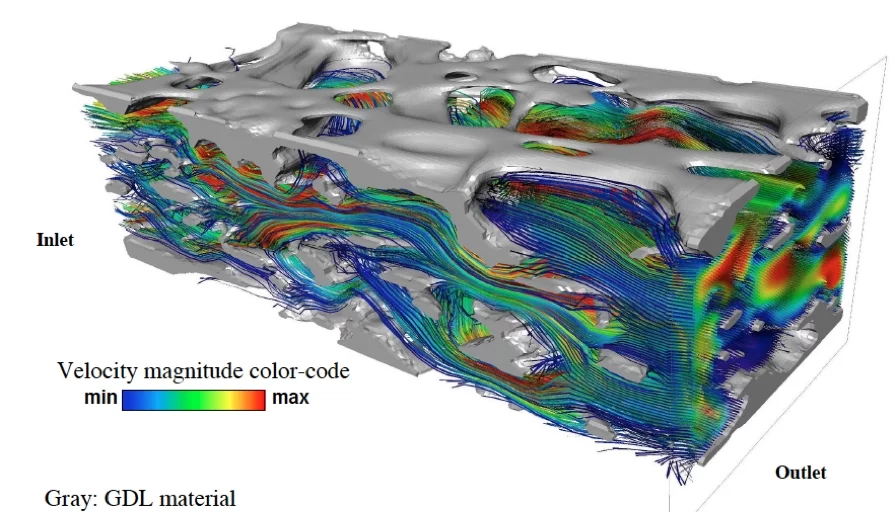The optimization of thermochemical and electrochemical conversion systems is of high importance for a sustainable energy future society. Of particular interest regarding the performance of polymer electrolyte fuel cells (PEFCs) is the study of the gas flow in the gas diffusion layers (GDL). More specifically, permeability and diffusivity measurements in a model PEFC under normal operating conditions are highly desirable. As laboratory-measurements of these quantities under such conditions are very demanding, an alternative is the use of computer-based simulations. For this, two key elements are needed: a) an advanced numerical tool capable of modeling key microscale processes, and b) in-situ X-ray tomographic microscopy (XTM) scans of the GDL material. Physical modeling of 3D gas flows is accomplished through novel mesoscale computational algorithms based on the lattice Boltzmann method (LBM). The provided figure illustrates computed flow streamlines through the GDL porous structure (carbon fiber paper Toray TGPH 060, domain size: 444x222x160 microns). The GDL microstructures, wherein the produced liquid water can be distinguished from the solid material, are obtained at the TOMCAT beamline of the Swiss Light Source (SLS). The results show that permeability and relative effective diffusivities of dry and partially liquid saturated GDL samples follow a relation proportional to (1-s)x, where (s) is the saturation level and the exponent x is approximately 3.
Publication: [1] N. I. Prasianakis, T. Rosen, J. Kang, J. Eller, J. Mantzaras, F. N. Büchi, Simulation of 3D porous media flows with application to polymer electrolyte fuel cells, Comm. in Comp. Phys. (in press) (2012). [2] T. Rosén, J. Eller, J. Kang, N. I. Prasianakis, J. Mantzaras, F. N. Büchi, Saturation dependent effective transport properties of PEFC gas diffusion layers, (submitted) (2012)
Further publications: Fuel Cell Systems and Diagnostics Group

